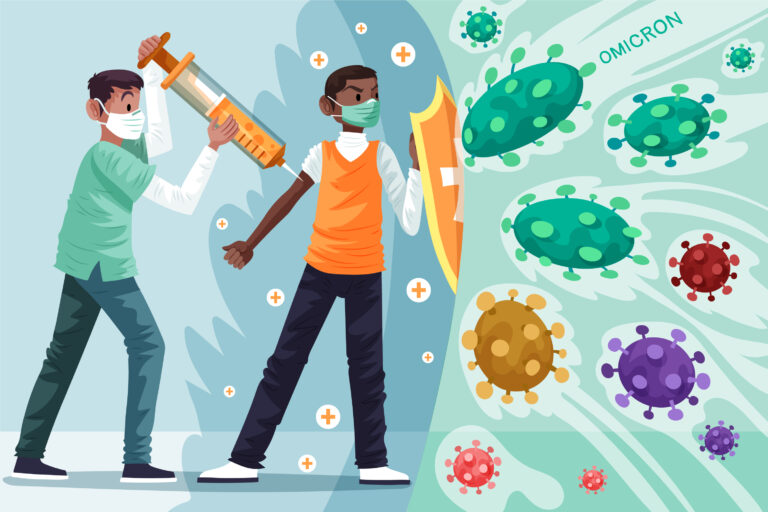
The H3N2 virus is a subtype of the Influenza A virus that has been responsible for multiple flu outbreaks across the globe. With its highly contagious nature, this virus poses significant health risks, particularly for young children, elderly individuals, and those with weakened immune systems. Understanding its symptoms, prevention strategies, and treatment options is crucial for safeguarding public health.
In this article, we will explore everything you need to know about the H3N2 virus, including its causes, symptoms, transmission, prevention methods, and treatment options.
Table of Contents
Toggle1. What is the H3N2 Virus?
H3N2 is a subtype of the Influenza A virus known for causing severe respiratory illnesses. It was first identified in humans in 1968 and has since undergone various mutations, making it a persistent threat to public health. This virus spreads mainly through airborne droplets when an infected person coughs or sneezes.
2. History of H3N2 Outbreaks
H3N2 has caused multiple flu epidemics, including the Hong Kong Flu pandemic of 1968-1969, which resulted in over a million deaths worldwide. Since then, it has been a common strain in seasonal flu outbreaks and has led to severe complications in vulnerable populations.
3. How is H3N2 Transmitted?
H3N2 spreads through:
- Airborne Droplets: After coughing, sneezing, or talking when an infected individual does so.
- Surface Contact: Touching infected surfaces then touching one’s nose, mouth, or eyes.
- Close Contact: Shaking hands, hugging, or being in crowded places increases the risk of transmission.
4. Common Symptoms of H3N2
Symptoms of the H3N2 virus can range from mild to severe and typically appear within 1-4 days after exposure. The most common symptoms include:
- High fever (above 100°F or 38°C)
- Persistent cough
- Sore throat
- Runny or stuffy nose
- Severe body aches
- Chills and sweating
- Fatigue and weakness
- Shortness of breath (in severe cases)
5. Risk Factors for Severe Infection
Certain individuals are at a higher risk of developing severe complications from H3N2, including:
- Children under 5 years old
- Adults over 65 years old
- Pregnant women
- People with chronic diseases like asthma, diabetes, or heart conditions
- Individuals with weakened immune systems
6. Prevention Strategies
Preventing the spread of H3N2 involves adopting proper hygiene and health measures. Here are the best prevention methods:
1. Get Vaccinated
- The annual flu vaccine offers protection against H3N2 and other flu strains.
- It is recommended for everyone above 6 months of age, especially high-risk groups.
2. Maintain Good Hygiene
- Wash hands often with soap and water for a minimum of 20 seconds.
- Use alcohol-based hand sanitizers when soap is unavailable.
- Avoid touching your face, especially eyes, nose, and mouth.
3. Follow Respiratory Etiquette
- Cough or sneeze into your elbow or a tissue.
- Dispose of used tissues properly.
- Wear a mask in crowded areas during flu season.
4. Strengthen Your Immune System
- Eat a balanced diet rich in vitamins and minerals.
- Get adequate sleep (7-9 hours per night).
- Engage in regular physical activity.
- Stay hydrated by drinking plenty of water and herbal teas.
5. Avoid Crowded Places
- During flu outbreaks, minimize exposure to public transport, shopping malls, and gatherings.
7. Available Treatment Options
There is no specific cure for H3N2, but treatment focuses on alleviating symptoms and preventing complications.
1. Home Remedies for Mild Cases
- Rest: Allow your body to recover.
- Hydration: Drink warm fluids like soups, herbal teas, and water.
- Steam Inhalation: Helps in clearing nasal congestion.
- Gargle with Salt Water: Relieves sore throat.
2. Over-the-Counter Medications
- Pain Relievers: Paracetamol or ibuprofen for fever and muscle pain.
- Decongestants: Relieve stuffy nose.
- Cough Syrups: To ease dry or productive coughs.
3. Antiviral Medications
- Prescription antivirals like Oseltamivir (Tamiflu) and Zanamivir (Relenza) may reduce the severity and duration of symptoms if taken within 48 hours of symptom onset.
8. When to Seek Medical Help?
Seek immediate medical attention if you experience:
- Difficulty breathing or chest pain
- Persistent high fever (above 102°F)
- Severe dehydration (dizziness, confusion, low urine output)
- Worsening symptoms after initial improvement
9. Conclusion
The H3N2 virus remains a significant public health concern, especially during flu seasons. By recognizing symptoms early, taking preventive measures, and seeking appropriate treatment, we can reduce its impact. Vaccination, hygiene practices, and a strong immune system are the best defenses against this virus.
Sources
- Influenza A Virus Overview: https://en.wikipedia.org/wiki/Influenza_A_virus
- General Influenza Information: https://en.wikipedia.org/wiki/Influenza?utm_source=chatgpt.com
- Antiviral Medications for Flu Treatment: https://www.verywellhealth.com/antibiotics-with-the-flu-do-they-really-work-8736487?utm_source=chatgpt.com
- Flu Vaccination and Prevention: https://www.health.com/cold-vs-flu-8733061?utm_source=chatgpt.com
- Recent Flu Outbreaks and Healthcare Impact: https://www.thesun.ie/health/14445936/hse-budy-hospital-pressure-flu-virus-symptoms/?utm_source=chatgpt.com
- Concurrent Respiratory Illnesses (“Quad-demic” Threat): https://nypost.com/2024/12/16/health/what-to-know-about-quad-demic-threat-that-could-hit-this-winter/?utm_source=chatgpt.com
